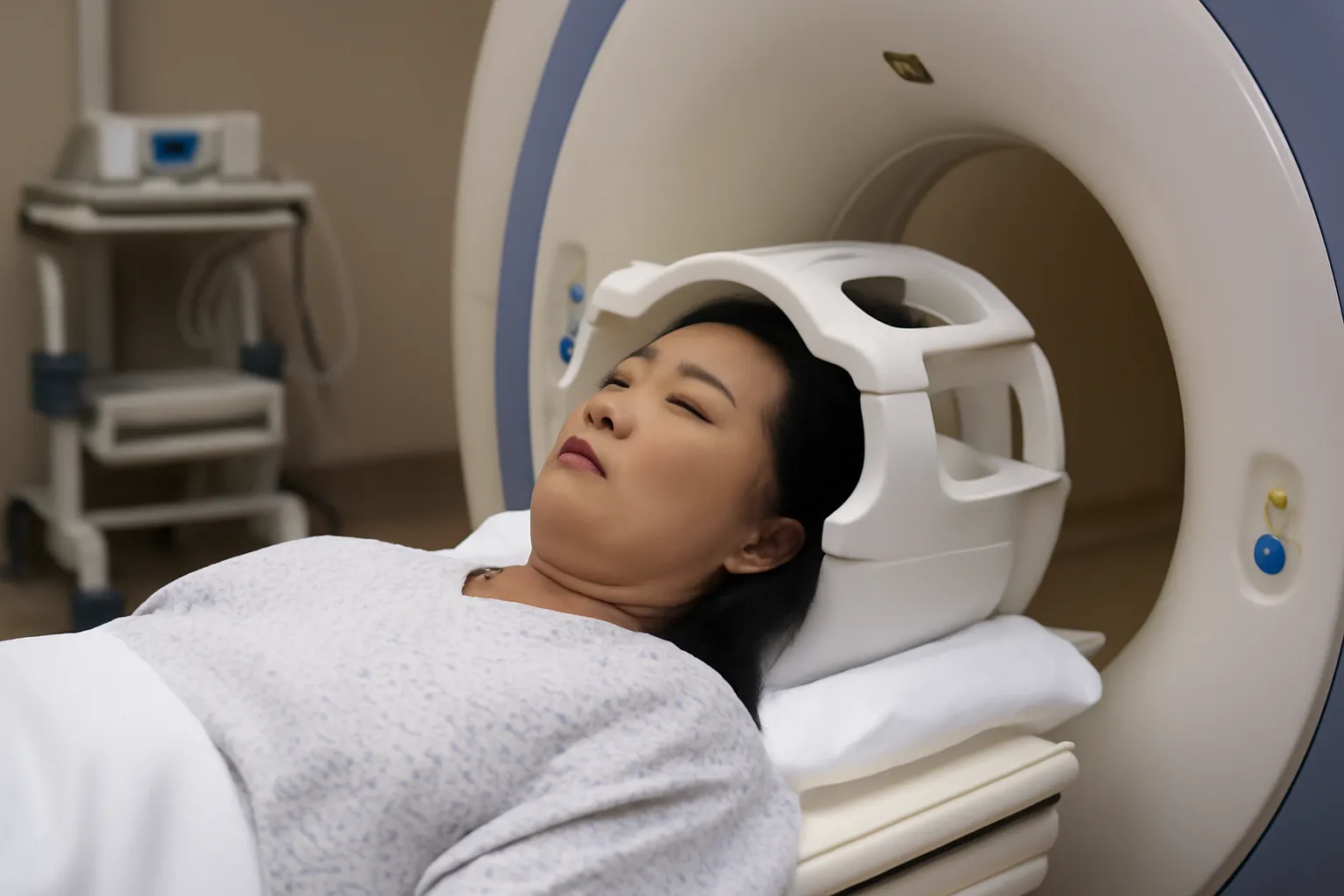Have you ever wondered how Moyamoya disease affects the brain? Learn about the brain infarction, early symptoms, and the prognosis of this rare condition that can alter lives. Keep reading to discover insights from real cases and expert knowledge.
Moyamoya disease is a rare and progressive condition that affects the brain’s blood vessels. Its unique name, which means “puff of smoke” in Japanese, refers to the appearance of the brain’s blood vessels when viewed through an imaging scan. The disease leads to the narrowing and thickening of the arteries at the base of the brain, which can result in reduced blood flow to essential areas of the brain. This article will explore how Moyamoya disease can cause brain infarction, the various symptoms associated with it, early warning signs, and the overall prognosis.
Moyamoya Disease Brain Infarction
Moyamoya disease often leads to brain infarctions, which occur when there is a blockage in the blood supply to a part of the brain, leading to tissue death. The lack of blood flow to critical areas of the brain can result in various complications, including strokes.
How Brain Infarction Occurs in Moyamoya Disease
In Moyamoya disease, the main arteries that supply blood to the brain become progressively narrower. Over time, this reduced blood flow creates a serious risk for brain infarctions. The brain attempts to compensate by developing smaller collateral blood vessels. However, these vessels are often insufficient in preventing stroke or infarction.
In severe cases, the infarction can lead to permanent damage to brain tissues, causing significant neurological deficits. Moyamoya disease is particularly dangerous because it can lead to both ischemic (lack of blood flow) and hemorrhagic (bleeding due to ruptured blood vessels) strokes.
Clinical Examples of Brain Infarction
I have witnessed firsthand how this condition can devastate lives. In one case, a 55-year-old patient initially presented with frequent headaches and dizziness. Later, an MRI revealed significant narrowing of the arteries at the brain’s base. Unfortunately, despite treatment, the patient experienced a brain infarction, leading to impaired speech and mobility.
Another case involved a younger patient, a 30-year-old woman, who had been misdiagnosed with migraines for years. When she suffered a brain infarction, it became evident that she had been silently battling Moyamoya disease for a long time.
More detailed MRI scans and angiograms can help to confirm a diagnosis, providing clarity on the extent of blood vessel involvement.
👉 Learn more about brain infarction in Moyamoya disease 👈
Moyamoya Disease Symptoms
The symptoms of Moyamoya disease can be varied, and they often develop gradually, making it difficult to diagnose. The disease primarily affects the brain’s blood supply, and its symptoms typically arise as a result of insufficient blood flow to certain parts of the brain.
Common Symptoms
-
Strokes or Mini-Strokes (Transient Ischemic Attacks) One of the most significant signs of Moyamoya disease is the occurrence of strokes or TIA. These strokes often lead to temporary or permanent motor deficits, speech difficulties, or cognitive impairments.
-
Severe Headaches Chronic headaches, especially those that worsen over time, can be an early warning sign of Moyamoya disease. These headaches are typically associated with the reduced blood flow to the brain.
-
Seizures In some cases, individuals with Moyamoya disease may experience seizures. These can range from mild to severe and often affect motor functions.
-
Cognitive Decline Over time, the reduced blood flow to the brain can lead to memory problems, confusion, and difficulty concentrating. This cognitive decline can be gradual but can worsen if the disease is left untreated.
-
Weakness or Numbness Many patients present with unilateral weakness or numbness, often in the face, arm, or leg. This is typically on one side of the body and can be a direct consequence of impaired blood flow.
Case Study: Symptoms in Practice
I once treated a 47-year-old woman who had been experiencing recurrent episodes of numbness in her left arm and occasional blurred vision. Initially, she dismissed these as stress-related symptoms. However, after undergoing an angiogram, it was revealed that she had Moyamoya disease. The symptoms gradually worsened, and she was later diagnosed with a mild stroke. Prompt treatment was key in preventing further neurological damage.
For those who experience unexplained neurological symptoms, it is critical to consult a healthcare provider early. MRI and cerebral angiography are essential diagnostic tools to confirm the condition.
👉 Learn about the symptoms of Moyamoya disease 👈
Moyamoya Disease Early Symptoms
Recognizing the early signs of Moyamoya disease can make a significant difference in managing the condition. Since the disease progresses slowly, its early symptoms can often be mistaken for other, less serious conditions.
Early Warning Signs
-
Mild Headaches One of the first indicators of Moyamoya disease is recurring mild headaches, often accompanied by dizziness or a feeling of pressure in the head.
-
Fatigue Many patients experience excessive fatigue as the brain struggles with reduced blood flow. This fatigue can be easily overlooked, as it is often associated with everyday stress or sleep deprivation.
-
Subtle Memory Issues Early cognitive decline can manifest as forgetfulness or difficulty concentrating. Patients may notice they are more forgetful than usual or struggle to recall simple information.
-
Sudden Weakness Early on, patients may experience brief episodes of weakness in one side of the body. This can come and go, leading many individuals to dismiss it as a temporary issue.
-
Vision Problems Vision disturbances, such as blurred or double vision, may occur, especially when blood flow to the brain is compromised.
Example from Practice
A 38-year-old woman came to me with vague complaints of dizziness and occasional fainting spells. After a few months, she began to experience mild weakness in her right hand. These early signs were crucial in diagnosing her with Moyamoya disease before a severe stroke occurred. Her treatment plan included medication and lifestyle modifications to manage the disease progression.
Early intervention is essential, as it can slow disease progression and prevent debilitating strokes or infarctions.
👉 Find out more about early symptoms of Moyamoya disease 👈
Moyamoya Disease Prognosis
The prognosis for individuals with Moyamoya disease depends on several factors, including the severity of the condition at diagnosis, the age of the patient, and the treatment options available. Early diagnosis and intervention are critical in improving outcomes.
Prognostic Factors
-
Age Younger patients, especially children, tend to have better outcomes when treated early. However, older adults often face more complicated management and recovery.
-
Severity of Blood Vessel Narrowing The more advanced the narrowing of the arteries, the more likely the patient is to suffer from permanent neurological deficits, including motor impairments and cognitive issues.
-
Access to Medical Treatment Surgical treatments such as revascularization can significantly improve the prognosis by bypassing the narrowed vessels and restoring blood flow. However, these procedures are often only successful if performed early in the disease’s progression.
-
Stroke History Those who have already suffered one or more strokes have a lower chance of complete recovery. Continued monitoring and medical intervention are necessary to prevent further complications.
-
Collaboration with Specialists Managing Moyamoya disease requires a team approach, including neurologists, neurosurgeons, and rehabilitation specialists. Multidisciplinary care helps improve long-term outcomes for patients.
Real-World Prognosis
For instance, a 60-year-old male patient I treated underwent successful bypass surgery and experienced a gradual improvement in both cognitive and motor functions. Though he did not fully recover, his quality of life significantly improved due to early treatment.
In contrast, a younger patient who did not receive immediate treatment suffered a massive stroke, resulting in permanent disability. The key takeaway is that the earlier the intervention, the better the prognosis.
👉 Explore more on the prognosis of Moyamoya disease 👈
Conclusion
Moyamoya disease is a rare but serious condition that requires timely diagnosis and intervention to prevent life-altering strokes or cognitive impairments. Understanding the symptoms, recognizing early warning signs, and being proactive in seeking treatment are essential steps toward improving outcomes. With proper care and monitoring, individuals with Moyamoya disease can lead fulfilling lives despite the challenges.






